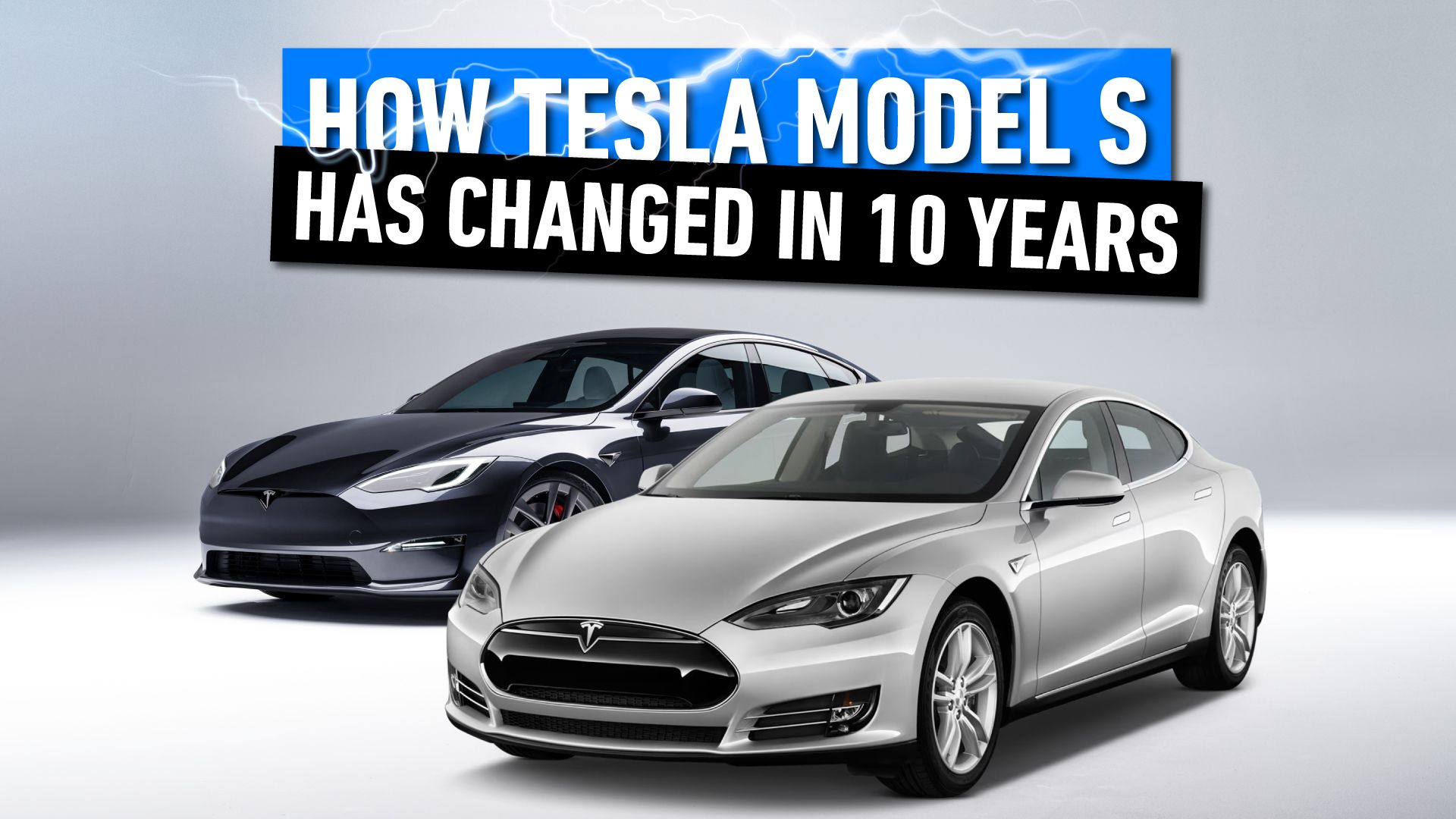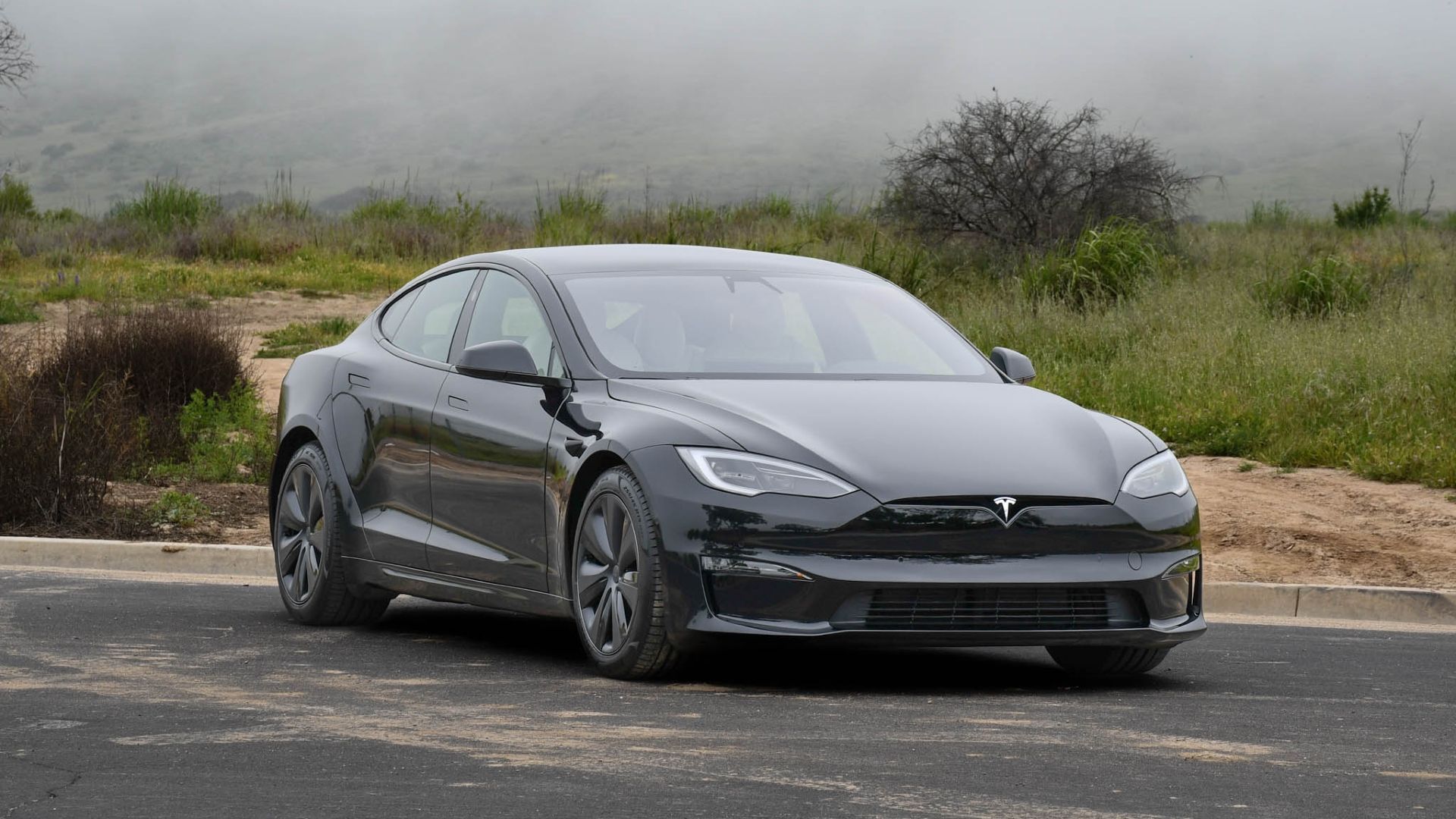In the world of electric vehicles, very few brands have had as big of an impact as Tesla. After releasing its
first production model in the form of the Tesla Roadster
, the American startup led by Elon Musk went on to release the Model S in 2012, setting the brand on the path to achieving what they have today. We’ve seen quite a few different models from Tesla since then, but the Model S remains one of the key entries in their lineup, remaining one of the best luxury EVs on the market that also doesn’t forget about power.
Throughout its life, which began in 2012, the Model S has been the flagship model for Tesla when it comes to showing the performance capabilities they’re capable of delivering. By continuously developing and upgrading the platform the full-size electric sedan sits on, the Model S is one of the best electric cars in the world, only falling short of the likes of the Lucid Air Sapphire within its segment. Here’s a look at the history of performance for the Tesla Model S and what speed you get with the trims that are available today.
In order to give you the most up-to-date and accurate information possible, the data used to compile this article was sourced from Tesla and other authoritative sources, including the EPA.
2:21

Related
These Are The 10 Most Significant Ways The Tesla Model S Has Changed Over The Last 10 Years
From single motor to Plaid tri-motor, the Model S transformed from an innovative electric car to an electric supercar contender in 10 years.
The Advanced Underpinnings of the Tesla Model S Over The Years
While the original Tesla Model S may not be able to hold on to the power of the newest iteration, the 2012 model still offers enough performance to keep up with the new cars that are similarly priced to its used value. You had the choice between four different variations, all improving on the lower trim across the board. In the base trim, a software-limited 40 kWh battery pack underpinned the Model S with a single electric motor at the rear axle.
This was good enough to get the base trim to 60 MPH in 6.5 seconds before topping out at a maximum speed of 110 MPH. This trim was discontinued when the first generation of the Model S was phased out in 2016, with its low range of 139 miles making it much less attractive than the higher trims.
Stepping up to the 60 kWh trim, this option for the Model S came with the same technology as the 40 kWh version but without the software limiter used on the 40. This trim could go from 0 to 60 MPH in a faster 5.5 seconds, reaching 130 MPH at its peak performance.
Top Speed and Acceleration (First Generation)
|
Trim |
0-60 MPH |
Top Speed |
|
Model S 40 |
6.5 Seconds |
110 MPH |
|
Model S 60 |
5.5 Seconds |
130 MPH |
|
Model S 70 |
5.5 Seconds |
130 MPH |
|
Model S 85 |
5.4 Seconds |
130 MPH |
|
Model S P85 |
3.9 Seconds |
130 MPH |
Another rear-wheel-drive that was introduced much later in the first-generation’s run was the Model S 70, which used a 70 kWh battery pack and went from 0 to 60 miles per hour in 5.4 seconds. In 2012, the largest battery pack you could choose for a Tesla Model S was the Model S 85. The Model S 85 matched the 60 and 70 trims regarding acceleration and top speed but saw a solid improvement in overall range, rated at 265 miles.
If you still wanted a little more performance with your Model S and wanted to keep the larger 85 kWh battery, the P85 (P meaning Performance) trim managed to reach 60 MPH in a mere 3.9 Seconds. Top speed remained at 130 MPH for the top-spec trim, with an exclusive price tag of $87,400. A P85 Plus was also available, which added improved suspension and handling.
Introducing All-Wheel-Drive Into The Mix
In 2014, Tesla introduced the most significant upgrade thus far for the Model S, rolling out the dual-motor all-wheel-drive trims that set the brand on the course it’s still following today. The lowest trim you could get with all-wheel-drive was the 85D, coming with the same battery pack as the standard rear-wheel-drive trim. The 85D could go from 0 to 60 MPH in a decent 5.2 seconds, maxing out at 155 MPH.
Top Speed and Acceleration (AWD Models)
|
Trim |
0-60 MPH |
Top Speed |
|
Model S 85D |
5.2 Seconds |
155 MPH |
|
Model S P85D |
3.1 Seconds |
155 MPH |
|
Model S 70D |
5.2 Seconds |
140 MPH |
A performance version of the 85D, the P85D, soon followed, which managed to reach 60 MPH in a blistering 3.1 seconds. At the time, this was good enough to rival some of the best sports/supercars on the road, cementing Tesla as a genuine competitor in the performance scene. A more tame all-wheel-drive model came in the form of the 70D, using the same battery as the standard 70 trim but had a better 0 to 60 MPH time of 5.2 seconds with a top speed of 140 MPH.
Refreshing The Nameplate For A Second-Generation
After being on the market for four years, Tesla rolled out the first design refresh for the Model S in 2016 to bring it up to date after the release of the Model X (the Model S’s SUV equivalent). The core foundations of the first-generation model were retained, but the front fascia as a whole became much sleeker than before with new headlights and the removal of the grille-like cosmetic.
One of the first models that came with the 2016 redesign was the 75 trim, which, like those before it, came with an all-wheel-drive model named the 75D, and improved on its performance for a higher price tag. Still, the base 75 trim with rear-wheel-drive could manage 60 MPH in 4.3 seconds after Tesla increased the trim’s performance in 2017 through an over-the-air update. The all-wheel-drive 75D slightly beat the base 75 to 60 MPH with a time of 4.2 seconds.
Top Speed and Acceleration (Second Generation)
|
Trim |
0-60 MPH |
Top Speed |
|
Model S 75 |
4.3 Seconds |
140 MPH |
|
Model S 75D |
4.2 Seconds |
140 MPH |
|
Model S 60 |
5.5 Seconds |
130 MPH |
|
Model S 60D |
5.4 Seconds |
130 MPH |
|
Model S 90D |
3.8 Seconds |
155 MPH |
|
Model S P90D |
2.8 Seconds |
155 MPH |
It wasn’t long until Tesla released the 60 trim, which followed the same strategy as the first Model S model by soft-limiting the 75 kWh pack to give buyers a more affordable option. The base 60 trim could reach 60 MPH in 5.5 seconds, with a top speed of 130 MPH. Performance remained essentially the same with the 60D all-wheel-drive model, achieving a 0-60 MPH time of 5.4 seconds and an equal top speed of 130 MPH.
The next step-up for the second-gen Model S was the 90D, which hit the road for the first time in 2015 as a 2016 model-year vehicle. The 90D and P90D aimed to succeed the 85D and P85D as the defining Model S when it comes to performance, offering a rapid 0-60 MPH time of just 3.8 seconds in the standard 90D. The P90D could get to the same speed in a lesser 3.2 seconds, but models equipped with the Ludicrous mode shaved even more time off, rocketing to 60 MPH in 2.8 seconds. These trims were fairly short-lived; however, they were discontinued in 2016.
If you wanted the most range possible from the Model S, the top-spec 100D trim was the first Model S to cross the 300-mile range barrier, with an EPA-estimated 335 miles on a single charge. The 100D didn’t lose out massively when it came to performance either, reaching 60 MPH in 4.2 seconds. Of course, it wouldn’t be a top-spec trim without a performance version, with the P100D beating the P90D considerably with a 0-60 MPH time of a mere 2.3 seconds.
2:03

Related
Tesla’s Build Quality Evolved A Lot Over The Last Decade
This is what you can expect from an all-new Tesla’s build quality compared to 10-year-old examples.
The Current Third-Generation Model S
In 2021, the second generation of the Model S came to a close after a nightly successful run, with another design refresh keeping the flagship sedan feeling as modern as possible inside and out. The numerical badges representing the battery size for the trims were dropped in 2019 in favor of the Standard Range, Long Range, and Performance trims, but the Standard Range only lasted until 2021. In 2024, you have the choice between two models, both of which offer standout incentives to make them two of the best electric sedans on the road.
The Differences Between The Two 2024 Trims
The first of the two Tesla Model S trims available in 2024 is the All-Wheel-Drive trim, which essentially acts as the long-range variant of the newest model. The all-wheel-drive model comes with a 100 kWh battery pack, as seen in the 100 models from the previous generation, allowing it to achieve an EPA-estimated 402 miles.
Looking at the entry-level trim’s performance, the Model S All-Wheel-Drive can still reach 60 MPH in just 3.1 seconds before topping out at a maximum speed of 130 miles per hour. For reference, this acceleration rating beats the likes of the P90D from the previous generation by 0.1 seconds.
Top Speed and Acceleration (2024 Models)
|
Trim |
0-60 MPH |
Top Speed |
|
Model S All-Wheel-Drive |
3.1 Seconds |
130 MPH |
|
Model S Plaid |
1.99 Seconds |
200 MPH |
However, if you want the highest levels of performance that Tesla currently offers across its entire fleet, the Model S Plaid blows almost everything in the electric sedan segment out of the water. Its triple-motor setup produces 1,020 HP. Reaching 60 MPH in 1.99 seconds and a top speed of 200 MPH, the Model S Plaid only falls short of the Lucid Air Sapphire, which can go from 0 to 60 MPH in a slightly faster 1.89 seconds.
Still, this doesn’t take away from the fact that Tesla has managed to keep the Model S competing at the very top of its class for almost 13 years now, with no signs of slowing down in the future. While the brand’s focus may not be on the existing models like the Model S, you’ll seriously struggle to find anything that matches the performance of the top-spec Plaid, especially for its price tag of $89,990.












